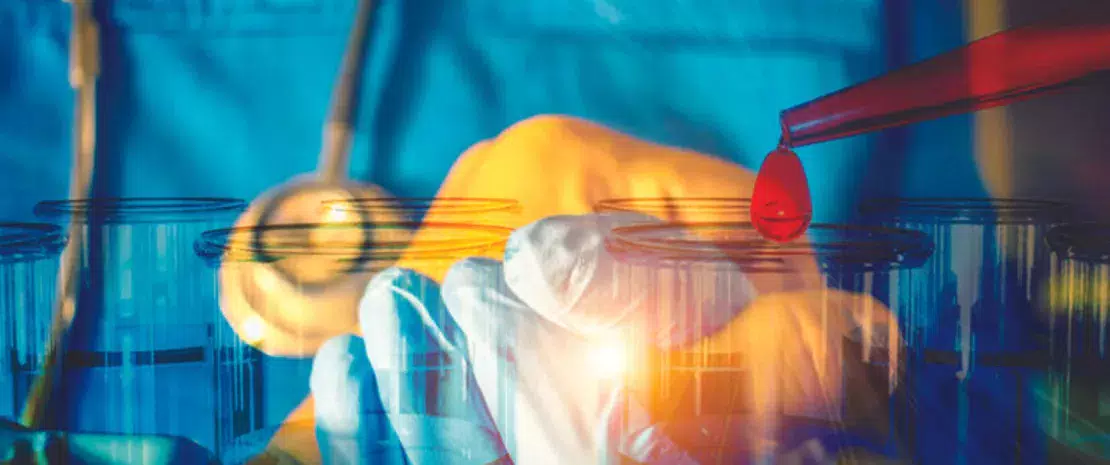Gut Microbiota #17
By Pr. Satu Pekkala
Academy of Finland Research Fellow, Faculty of Sport and Health Sciences, University of Jyväskylä, Finland
Sources
This article is based on scientific information
Sections

About this article
LINKING GASTROINTESTINAL MICROBIOTA AND METABOLOME DYNAMICS TO CLINICAL OUTCOMES IN PAEDIATRIC HAEMATOPOIETIC STEM CELL TRANSPLANTATION
Haematopoietic stem cell transplantation (HSCT) is used to treat many pathological conditions. At post-HSCT graft-versushost disease and infections can develop, being major causes of mortality. The current understanding of the role of the gut microbiota (GM) on adverse outcomes in paediatric patients post-HSCT is scarce. In a longitudinal study, Vaitkute et al. determined whether the GM and fecal metabolome associates with the clinical outcomes in 64 paediatric HSCT patients during ~ 66-days inpatient stay. Following HSCT, the GM alpha-diversity decreased. There were compositional shifts in the GM, and most of the patients did not return to their initial GM composition. The GM was clustered into community state types [CST(s)]. CST1 was common before HSCT, and included abundant Clostridium XIVa, Bacteroides and Lachnospiraceae. The lack of total parenteral nutrition contributed to CST1. CST2 was common at post-HSCT and was characterized by abundant Streptococcus and Staphylococcus as well as the use of vancomycin and metronidazole. CST3 was also common at post-HSCT and included abundant Enterococcus, Enterobacteriaceae and Escherichia. CST3 associated with a higher risk of viraemia, total parenteral nutrition and various antimicrobials. The metabolomic analyses revealed that fecal butyrate at baseline associated with a lower risk of viraemia. Longitudinally, acetate and butyrate decreased, and glucose increased after HSCT. The identified GM taxa and metabolites may be useful biomarkers for predicting the risk of complications post-HSCT. However, larger longitudinal studies are warranted.
A PROSPECTIVE STUDY OF THE INFANT GUT MICROBIOME IN RELATION TO VACCINE RESPONSE
The establishment of infant gut microbiota (GM) early in life is essential for the developing immune system. In addition, GM contributes to immune responses to vaccination, such as polio vaccine. However, research in this field is still scarce. Moroishi et al. enrolled 83 infants and studied the composition and functions of the early-life (6-weeks of age) GM in relation to infant antibody response to pneumococcal capsular polysaccharide (PCP) and tetanus toxoid (TT) at 1-year of age. PERMANOVA analyses of pair-wise GM community composition showed a weak association with PCP and TT antibody responses. In metagenome analyses, the authors found a negative association between TT response and Aeriscardovia aeriphila, whereas the association was positive with Staphylococcus aureus, Escherichia coli, Streptococcus thermophilus, and Anaerococcus vaginalis. However, only A. aeriphila remained significant after FDR correction. Lower PCP vaccine response associated with nine pathways, such as phenylalanine biosynthesis and pyrimidine deoxyribonucleotides de novo biosynthesis. In contrast, pantothenate and coenzyme A biosynthesis III, pyrimidine ribonucleosides degradation, methylphosphonate degradation II, and pyrimidine ribonucleotides de novo biosynthesis pathways were associated with higher PCP response. Five pathways associated positively with TT response, including especially CDP-diacylglycerol biosynthesis I and CDP-diacylglycerol. As a conclusion of this study, A. aeriphila could be used as a biomarker of TT response. Further, the early-life GM functions may influence an infant’s vaccine response.
META-ANALYSIS OF MUCOSAL MICROBIOTA REVEALS UNIVERSAL MICROBIAL SIGNATURES AND DYSBIOSIS IN GASTRIC CARCINOGENESIS
Gastric cancer (GC) is the 4th leading cause of cancer death. The developmental stages of GC are superficial gastritis (SG), atrophic gastritis (AG), intestinal metaplasia (IM), dysplasia and gastric carcinoma. Helicobacter pylori infection is a common player in GC that reduces secretion of stomach acid, allowing overgrowth of non-H. pylori microbes. Studies on the associations between gastric microbiota and GC have been inconsistent. Liu et al. did a meta-analysis of gastric microbiota from six independent studies to identify microbial signatures in GC. Alpha-diversity was lower in GC than in SG, AG and IM. Veillonella, Dialister, Granulicatella, Herbaspirillum, Comamonas, Chryseobacterium, Shewanella and Helicobacter were newly identified in this study as universal biomarkers discriminating GC from SG. In addition, opportunistic pathobionts Fusobacterium, Parvimonas, Veillonella, Prevotella and Peptostreptococcus were more abundant in GC than in SG. Contrarily, the abundance of Bifidobacterium, Bacillus and Blautia were lower. The microbial functions were inferred using PICRUSt2. Compared to SG, the most enriched pathway in GC was peptidoglycan maturation of peptidoglycan biosynthesis. The most depleted pathway in GC was Helicobacter specific tricarboxylic acid cycle, which agrees with the very low abundance of Helicobacter in GC patients. The authors further found that Helicobacter seems to affect gastric microbiota as H. pylori-negative patients had higher microbial diversity than the H. pylori-positive. To conclude, gastric microbiome can be a biomarker capable of distinguishing patients across disease stages.




